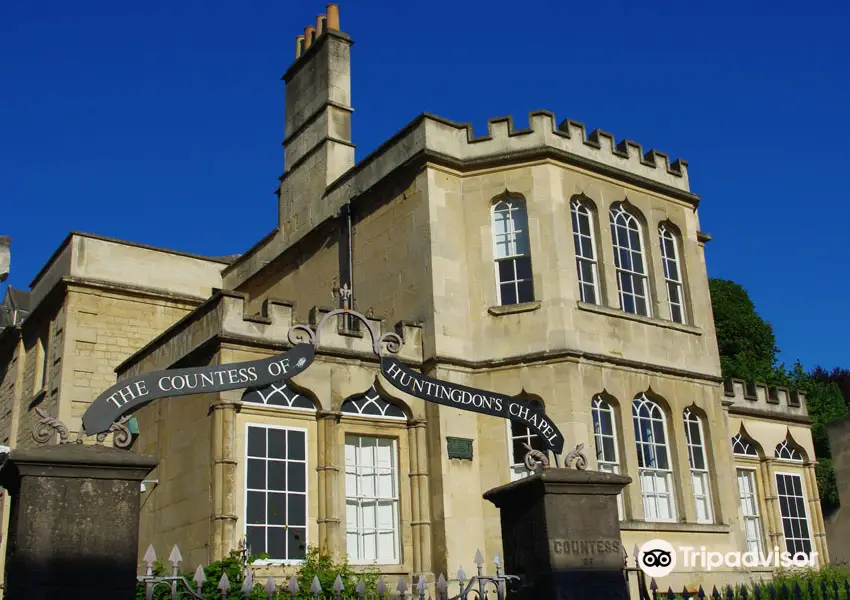Museum of Bath Architecture
 based on 152 reviews
based on 152 reviewsThe Bath Building Museum (Museum of Bath Architecture) doesn't look like a museum. It's hidden among many houses and shops on the edge of the city. It's guided by signs along the road, through the gates, through the paths, to find it. The hall is also just a hall separated by rows of cabinets with exhibits and presentations. In fact, it is not a museum, originally built for Mrs Huntingdon in 1765, and changed to the Bath Architecture Museum in 1992. The museum fare is 6.5 pounds, and the students 5.5 pounds. There are not many visitors and it is very quiet. The hall with collections, purchases or donations does not feel empty. With these cabinets and exhibits, we can piece together the formation, development and preservation of the small town of Bath. The most impressive is the information and exhibits about John Wood, the architect and son of John Wood, the principal planner of Bath. The Jane Austen Center's introduction describes old John Wood in such a sentence - 'The pioneer who brought Bath from being an insignificant little town into the mainstream of European architecture.'. There is no doubt that John Wood and his son have a deep influence on the history of Bath and even the British architecture. Old John Wood planned the overall style of Bath, Designed many buildings such as Queen's Square (Queen Square), The Circus, his son John Wood, inherited his father's legacy, and finally completed the circular square, designing the Bath Assembly Hall (Bath Assembly Rooms), the famous Royal Crescent Building (The Royal Crescent). The Georgian-style piazza was inspired by the Colosseum, with 33 houses surrounded by a circle and divided into three equal lengths, ensuring that everyone entering the square can see a facade of the building at a glance. Overlooking Bath, you will find the Roundabout, Queen's Square and Gay Street in between, which forms the Masonic logo the shape of a key. The Royal Crescent is made up of 30 townhouses with 114 columns at a 30 degree angle. Brook Street (Brock Street) connects the circular square that symbolizes the sun to the royal crescent building that symbolizes the moon. This Palladian style has had a major impact on many cities in the UK, such as London, Edinburgh, Bristol, etc. The museum displays manuscripts, books, drawing tools and more from the old John wood. In addition, there are paintings of Bath landscapes from different eras. The paintings can see the changes of Bath over the centuries.
More
Recommendations Near Museum of Bath Architecture
Museum of Bath Architecture Reviews: Insider Insights and Visitor Experiences
Some reviews may have been translated by Google Translate (1 Review)Trip.com
(1 Review)Trip.com (152 Review)TripAdvisor
(152 Review)TripAdvisorYou Might Also Like
The Roman Baths
Blenheim Palace
Westminster Abbey
London Eye
Nearby Attractions
Popular Types of Attractions in Bath
Popular Restaurants in Bath
Popular Destinations
Recommended Attractions at Popular Destinations
Popular Trip Moments
Popular Travel Types
More Things To Do in Bath
Site Operator: Trip.com Travel Singapore Pte. Ltd.
The Bath Building Museum (Museum of Bath Architecture) doesn't look like a museum. It's hidden among many houses and shops on the edge of the city. It's guided by signs along the road, through the gates, through the paths, to find it. The hall is also just a hall separated by rows of cabinets with exhibits and presentations. In fact, it is not a museum, originally built for Mrs Huntingdon in 1765, and changed to the Bath Architecture Museum in 1992. The museum fare is 6.5 pounds, and the students 5.5 pounds. There are not many visitors and it is very quiet. The hall with collections, purchases or donations does not feel empty. With these cabinets and exhibits, we can piece together the formation, development and preservation of the small town of Bath. The most impressive is the information and exhibits about John Wood, the architect and son of John Wood, the principal planner of Bath. The Jane Austen Center's introduction describes old John Wood in such a sentence - 'The pioneer who brought Bath from being an insignificant little town into the mainstream of European architecture.'. There is no doubt that John Wood and his son have a deep influence on the history of Bath and even the British architecture. Old John Wood planned the overall style of Bath, Designed many buildings such as Queen's Square (Queen Square), The Circus, his son John Wood, inherited his father's legacy, and finally completed the circular square, designing the Bath Assembly Hall (Bath Assembly Rooms), the famous Royal Crescent Building (The Royal Crescent). The Georgian-style piazza was inspired by the Colosseum, with 33 houses surrounded by a circle and divided into three equal lengths, ensuring that everyone entering the square can see a facade of the building at a glance. Overlooking Bath, you will find the Roundabout, Queen's Square and Gay Street in between, which forms the Masonic logo the shape of a key. The Royal Crescent is made up of 30 townhouses with 114 columns at a 30 degree angle. Brook Street (Brock Street) connects the circular square that symbolizes the sun to the royal crescent building that symbolizes the moon. This Palladian style has had a major impact on many cities in the UK, such as London, Edinburgh, Bristol, etc. The museum displays manuscripts, books, drawing tools and more from the old John wood. In addition, there are paintings of Bath landscapes from different eras. The paintings can see the changes of Bath over the centuries.